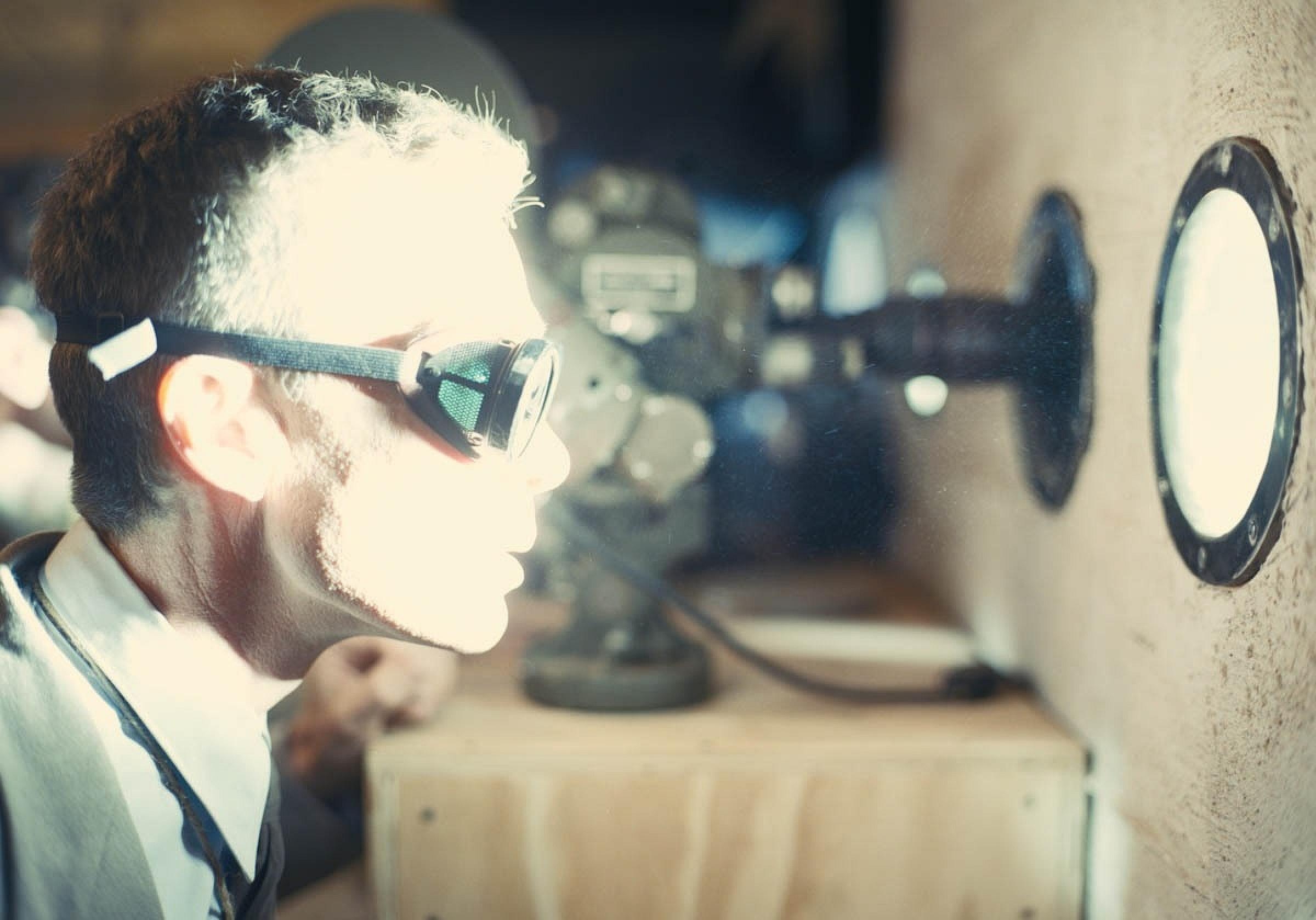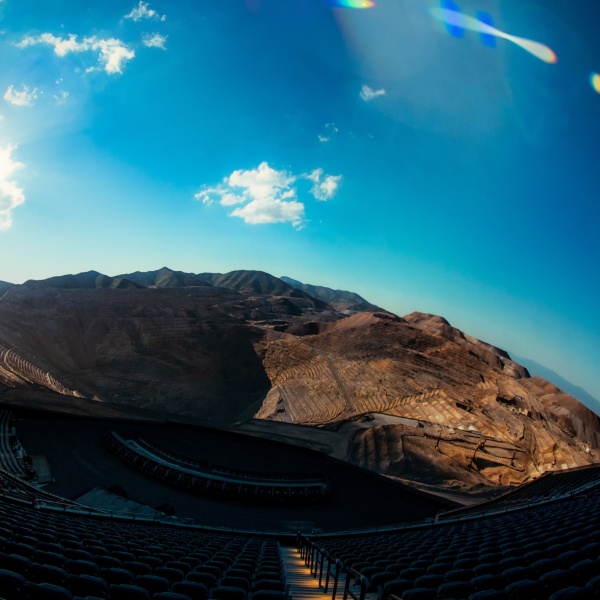Oscar-winning sound designer/supervising sound editor Richard King (“Dunkirk,” “Inception,” “The Dark Knight,” “Master and Commander: The Far Side of the World”) has two frontrunners this season with Christopher Nolan’s explosive “Oppenheimer” and Bradley Cooper’s musical “Maestro.” While each offers very different soundscapes, they capture the essence of these two 20th-century giants of quantum physics and music.
For the sound design of the biopic thriller about the father of the atomic bomb, J. Robert Oppenheimer (Cillian Murphy), King, Oscar-winning music and sound effects mixer Kevin O’Connell (“Hacksaw Ridge”), and dialogue mixer Gary Rizzo (“Dunkirk,” “Inception”) got to create the horrifying sound of the Trinity test explosion along with the sounds of the subatomic world of particles and waves that stirred Oppenheimer’s troubled mind.
For the sound design of the complicated love story between legendary conductor-composer Leonard Bernstein (Cooper) and actress wife Felicia Montealegre (Carey Mulligan), King worked with the Oscar-nominated team from the director’s “A Star Is Born”: production sound mixer Steve Morrow, re-recording mixers Tom Ozanich and Dean Zupancic, and music editor Jason Ruder. They took the Dolby Atmos experience to a higher level of immersion with live recording. This included parties but was dominated by Bernstein’s epic musical orbit, highlighted by a stirring performance of Gustav Mahler’s “Resurrection” Symphony No. 2 at Ely Cathedral in London, and the re-recording of famous Bernstein cues (such as “On the Waterfront,” a “West Side Story” medley, and “Candide”), which serve as the score.

The Boom Boom of ‘Oppenheimer’
“For the [quantum physics], the idea was to feel it rather than necessarily understand it intellectually,” King, who exhaustively researched the sound of the science, told IndieWire. “Oppenheimer was operating in a world in the ’20s; I imagine it was kind of like the ’60s on steroids. It was an explosion of creativity and art and science. The world was really moving from antiquity into modernity, and everything was up for grabs. There aren’t a whole lot of moments in the movie when you really get into Oppenheimer’s head because he was such an enigma. I don’t think the movie sets out to explain him, but the beginning is one of those times when you really see him at his most vulnerable and trying to reconcile the contradiction of light waves and particles in his mind.”
King said the goal was to show the latent power in these infinitely small phenomena and to “convey some of the magic of these physics paradoxes.” In fact, he suggested that it was counter-intuitive to think of these subatomic forces as the most powerful in nature, much more so than gravity or electromagneticism. So they used a variety of real-world sounds, such as large, arcing sparks, physical bangs and snaps, and lots of electronic components.
“And with the kind of light dancing waves of energy, we wanted to give a sense of them coming in and out of phase with each other as they overlap and drift by each other,” King continued. “For the sound of the black hole that Oppenheimer explains to his students, Chris wanted a sense of this thing that never stops, like it keeps shrinking and shrinking. It was something that I manipulated, the idea that gravity becomes so intense that you can’t stop this imploding on itself. We ended up using like a reversed explosion with a lot of EQ sweep and there are some sounds of rock crushing to get a sense of compression, pressure.”
The 20-kiloton Trinity test has been fully documented, and King and the team read first-hand accounts from spectators who described the blast as a freight train going by or an unnatural thunderstorm. He went on YouTube and found a variety of sounds. In addition, he sent a recordist to capture one of the on-camera special effects explosions led by SFX supervisor Scott Fisher.
“One of the reasons I like to do this research is because it actually gives you more ideas that you can steal from the stuff,” said King, who described one of the sounds as a “cosmic door slamming.” To this, the team added modified thunder, a lot of low-end rumble, and, in the bunker, the sounds of the equipment shaking.
As for the 40-second shockwave delay to hit the bunker, it provided a great moment of awe accentuated by the prolonged silence. “What the audience is seeing is incredible,” King added. “And, I think, they appreciated those moments of reality of just hearing it breathe and move a little bit, and kind of gasp as they witness this really dramatic event.”

The Long Symphony of ‘Maestro’
Cooper has described the sound of “Maestro” as a two-hour symphony, to which King added that “the movie is cut very much to the music and sound was really kind of used in a musical way in the sense that…there was no difference in the sound of the transition, one scene blends into the other, each one has its own specific sound, and its own specific quality so that it just flows. And, as [Bernstein’s] life progresses, there’s a sense of momentum that doesn’t stop and start, stop and start.”
As part of that flow, Cooper tasked King with crafting the sound of wind as a motif when Lenny and Felicia are in Central Park and Tanglewood or at their homes in Connecticut and Long Island. “They’re in the city quite a bit, so there’s specific sounds for that, but not in as quite a bold a way or prominent a way as in ‘Oppenheimer.’ [Cooper] wanted it to be a component of nature, and we worked very hard on the winds to get them appropriate, which is surprisingly hard. How strong it is, the movement, gusting, not gusting. And, I think, that wind motif that he had in mind was the wind of Bernstein’s trajectory, which was so rapid, and his rise to fame was so rapid, and so his life became so full and ever-evolving.”
The music and sound effects are in concert with one another. Indeed, the use of live recording is innovative for its realism. The audience is like a fly on the wall at the parties, which are mic’d everywhere, so it’s more alive, and the actors could behave naturally. They also added loop groups on top. This allowed Cooper to be very specific in who and what we heard and gave him great latitude in the editing room to concentrate on the pertinent information while keeping it lively in the background.
“That put the actors much more in the moment than if they were just told to mouth and not actually say any sound because the star is talking,” King said. “It forces the actors to act as if they really are at a party. So if they need to raise their voice to be heard, they’ll do that.”
The Thanksgiving gathering is a tour de force that culminates in a fight between Felicia and Lenny in their bedroom as the Macy’s Parade passes their window and she lashes out at him for his selfish behavior and musical elitism. Cooper wanted the sequence to have a heartbeat and a rhythm as part of the film‘s long symphony of sound. “That’s, I believe, all production,” King added. “There might be a tiny little loop group, just a couple of voices, but that’s primarily the characters that were in that room and the codas.”
In addition, Cooper puts audiences at the center of the musical performances. The Ely Cathedral scene with the Mahler “Resurrection” Symphony was recorded in that space and was mic’d everywhere, capturing the reverb of the building. “They did a beautiful job of mixing all those tracks together using Atmos that Steve Morrow and Jason Ruder captured on set, really making you feel like you’re in a theater,” King said. “And [they] kind of very gently got out of all the backgrounds when the Mahler kicked in, and only brought the actual sound of the world, exclusive of the music, in when they finish. And there’s this pregnant pause and the audience is stunned, still in the moment of listening to the music, and the applause crashes in.
“I learned a lot from the film, just from hearing music of Bernstein’s that I’d never heard before, or had heard before but didn’t attribute to him,” added King. “There’s such a strong sense of period in the music.”

